25th May 2023
25th May 2023
PharmaLex (formerly pharmasol) newsletter: Spring 2023
Welcome to our Spring 2023 newsletter!
We begin this edition with an update on our integration into the PharmaLex brand, and the expanded capabilities and services that our move into PharmaLex now brings directly to our customers – spanning the entire product lifecycle. We’re hugely excited about the opportunities and collaborations that lie ahead, and we hope you will be, too.
We also celebrate our latest customer successes, track the key regulatory moves and, in our Product Spotlight, we offer an exclusive glimpse of the powerful enhanced remote monitoring capabilities coming in psiXchange v3.
Finally, in our Industry Insight, Iain Barnden takes an expert look at what is currently a red-hot topic – the potential applications of AI for pharmacovigilance. Iain shares his insight into what AI might do well within pharmacovigilance, and what it might not – with a little help from ChatGPT…
We do hope you enjoy this issue. As ever, if you’d like to meet 1:1 with us to the explore the gains of automating and optimising your business-critical PV processes, or if you’d like to schedule a live, bespoke demo of our psiXchange or rapidLIVE solutions for your team, we’re here to help and support you.
Best regards,
Tim Billington
Commercial Director, PV Digital Solutions
+44 7768 336 302
tim.billington@pharmalex.com

Twitter: @pharmasol
LinkedIn: https://www.linkedin.com/company/pharmasol
NEWSLETTER CONTENTS:
- Corporate Update
- Customer Success
- Regulatory Moves
- Product Spotlight
- Industry Insight
- Event Review
CORPORATE UPDATE: The future is PharmaLex
Tim Billington, Commercial Director of PV Digital Solutions, shares an update on pharmasol’s transition into the PharmaLex brand.
Notice something different about us…? We’re very pleased to confirm that our legal integration into PharmaLex is now complete. The process has been smooth and seamless, and the whole team is very excited about the opportunities ahead for us as part of the consolidated organisation.
Over the next few months we’ll be getting to know our expanded global network of colleagues – who represent an unparalleled breadth and depth of specialist expertise, delivered across the pharmaceutical, biotech and medical device industries – and exploring how this comprehensive new set of services can enhance our solution offering.
So, what does this mean for our customers? Well, in many ways it’s ‘business as usual’, with the gold-standard solutions, service and support that we hope you’ve come to expect from the pharmasol team. Within PharmaLex, our industry-leading psiXchange and rapidLIVE solutions are now at the heart of our PV operations, and we’ll be playing a central role in how this key strategic group moves ahead as it continually evolves to support our customers’ business success.
If you have any questions about the additional core services and capabilities that are now available to your organisation as PharmaLex customers, please get in touch and we’ll be happy to provide an overview of the opportunities. You can also head to the PharmaLex website and explore the full range of global solutions covering the entire product lifecycle – from strategic and scientific consultancy to integrated product development, post-launch outsourcing, and portfolio mergers & acquisitions.
We’ll be keeping you updated with the latest corporate news over the months ahead, including introducing you to our new senior management colleagues.
Meet the PharmaLex management team:

Dr Raphael Troost, EVP Pharmacovigilance
A physician with over 20 years’ experience in clinical pharmacology, clinical trials, medical informatics and pharmacovigilance, Dr Raphael Troost serves on the executive board at PharmaLex Group as EVP Pharmacovigilance.
“PharmaLex has built an impressive track record of specialised service delivery spanning almost three decades and, in that time, has demonstrated its strong commitment to exploring innovative solutions for customers. It is fantastic to have pharmasol’s technology solutions fully embedded into the PharmaLex brand, and we are looking forward to working together to innovate even further – developing the integrated solutions that will drive growth for our customers worldwide.”
CELEBRATING CUSTOMER SUCCESS
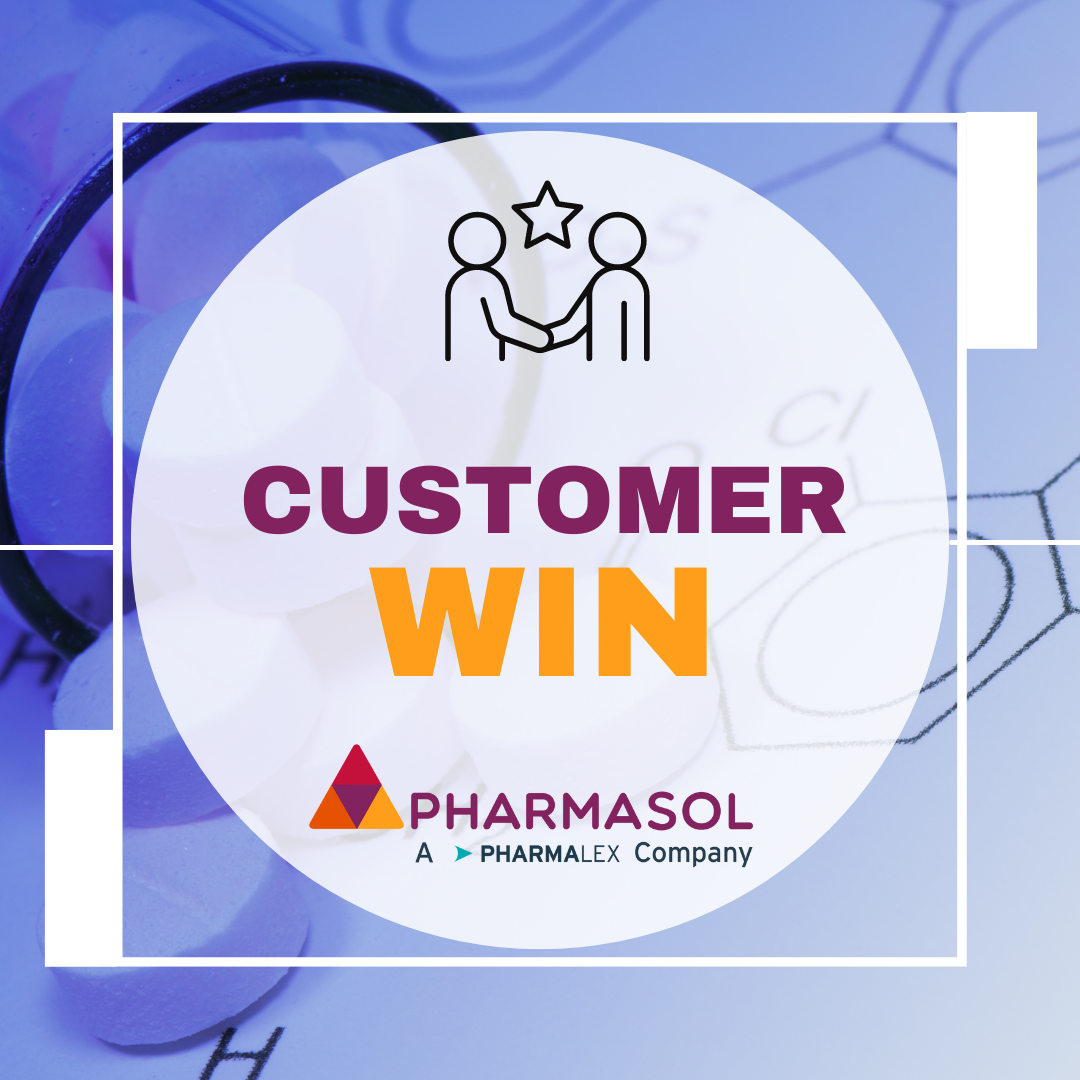
Recent rapidLIVE wins
Our rapidLIVE solution is optimised for Contract Research Organisations, pharmaceutical companies, biotechs and medical device businesses, and is available now for the latest version of Oracle Argus - critical for E2B R3 readiness. Discover more.
Highlight psiXchange win
Head to our website to explore psiXchange, our industry-leading platform that dramatically simplifies and streamlines the sending of safety reports to sites and relevant authorities.
REGULATORY MOVES: Efficienct gains with end of Spanish CCAA reporting obligation
From January 31st 2023, it is now no longer necessary to communicate SUSARs or annual safety reports to CCAAs in Spain, under a new mandate issued by the la Agencia Española de Medicamentos y Productos Sanitarios. Prior to this change, Spain operated under the unique requirement that, in addition to reporting to the overall national authority, organisations also had an obligation to report to regional competent authorities – the CCAAs – and to review and meet their specific reporting requirements each time. The removal of this entire additional layer of reporting delivers a welcome gain in efficiency for reporting organisations. Good news!
You can review the issued documentation here (Documento de instrucciones d0e la Agencia Española de Medicamentos y Productos Sanitarios para la realización de ensayos clínicos en EspañaVersion 17, de 18 de noviembre de 2022).
PRODUCT SPOTLIGHT: Exclusive preview – enhanced remote monitoring capabilities coming in psiXchange v3
With our release of psiXchange 2.4.1, we introduced a number of key remote monitoring capabilities for customers – delivering to CRAs a clear overview of what’s happening on sites, including flagging potential issues with distribution such as non-receipt of emails, bounced emails, and incorrect contact information.
With psiXchange v3, we’ve boosted these capabilities further, incorporating status bars and a raft of new visual features that give CRAs total at-a-glance clarity for even greater oversight and control.
Here we share a sneak preview of the enhanced remote monitoring capabilities in psiXchange 3.0 – still under development and subject to adaptations. Watch this space for further updates soon on psiXchange v3 availability!
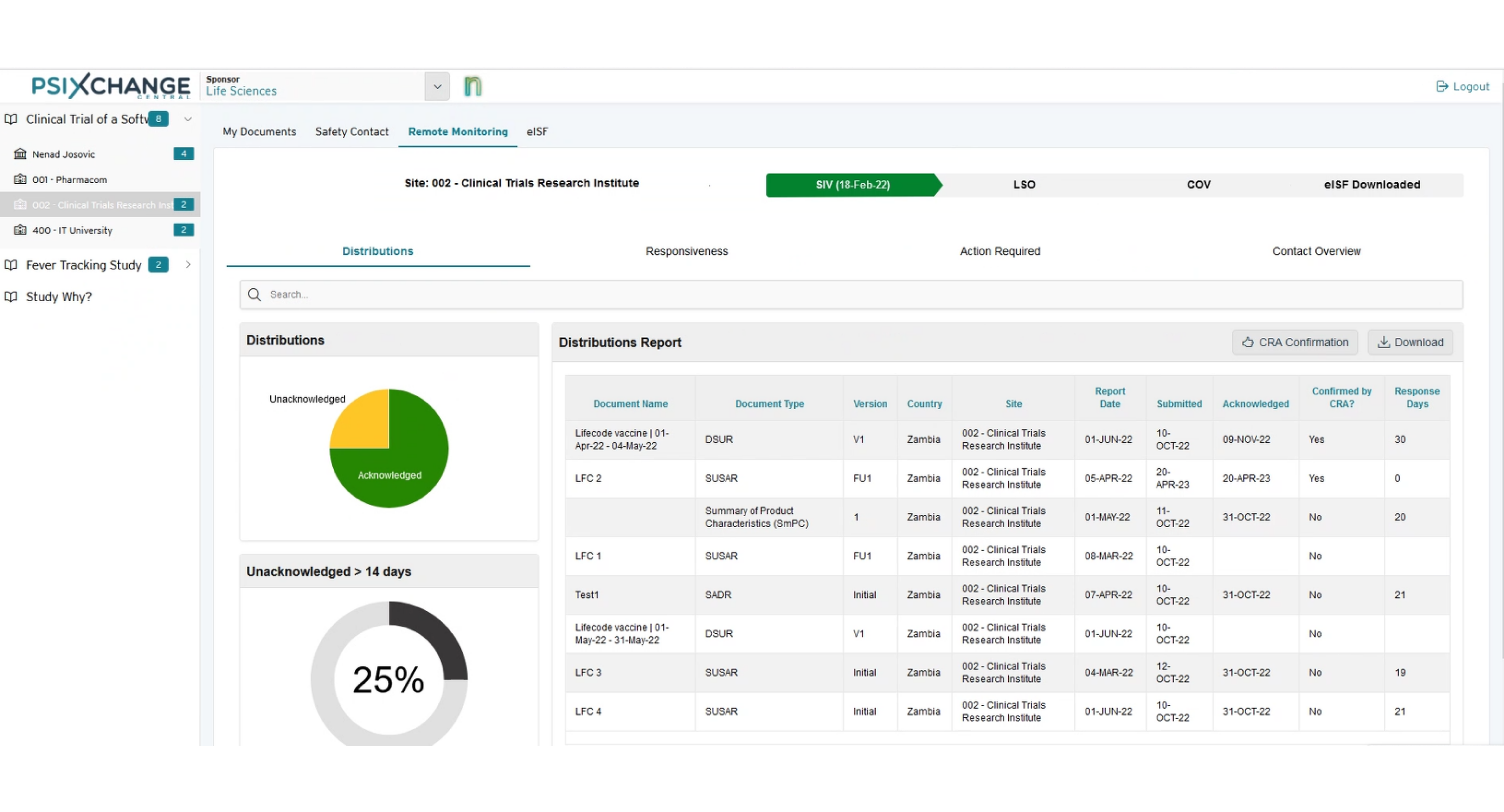
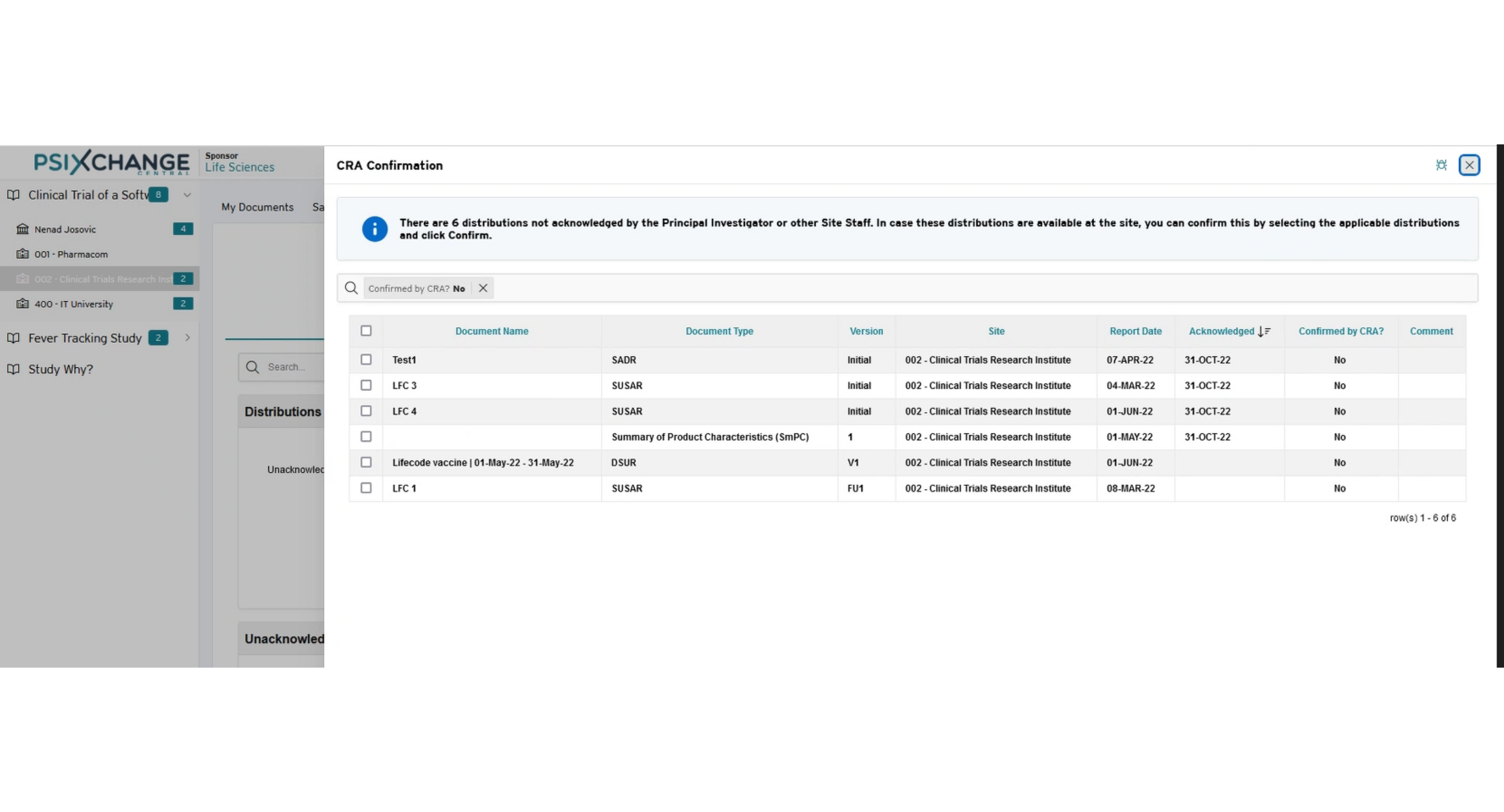
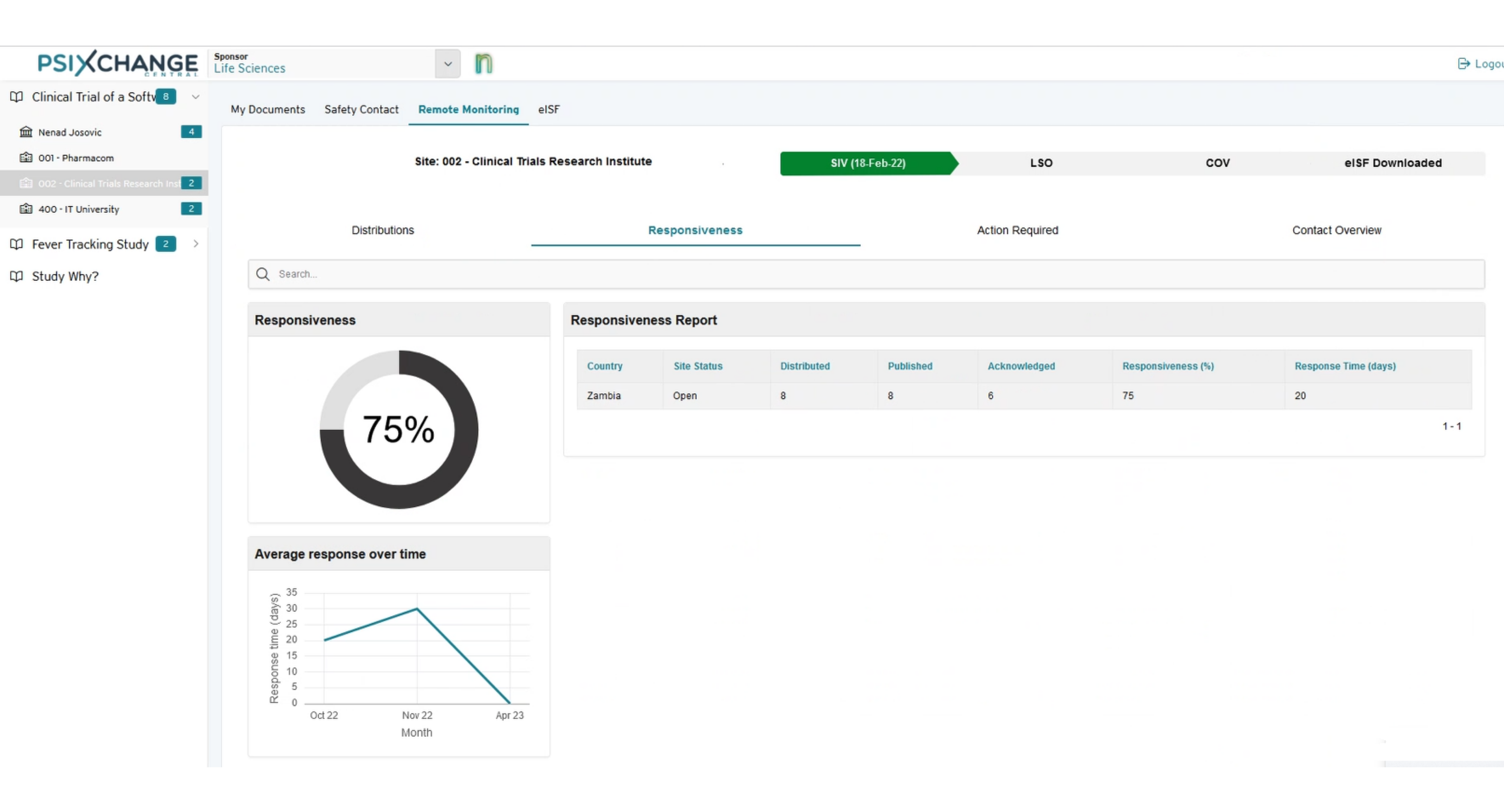
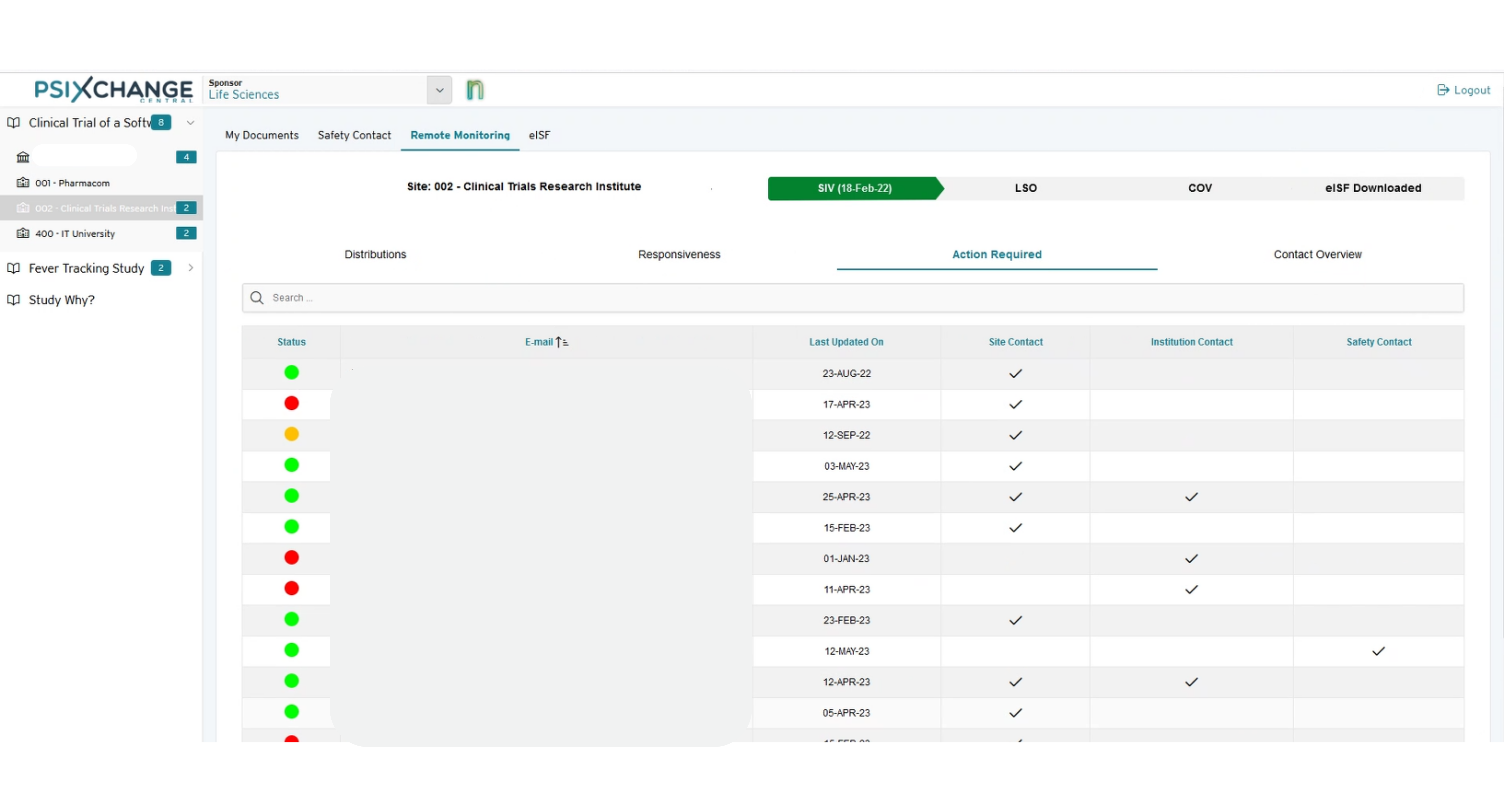
INDUSTRY INSIGHT: Pharmacovigilance and AI – a drug safety revolution?
In this Industry Insight, PharmaLex Technical Analyst Iain Barnden looks at the potential applications of AI for pharmacovigilance…with a little help from ChatGPT.
In the pharmaceutical industry, the need to adapt to constant change – whether that’s evolution in standards, regulations or new technologies – has been a dominant feature of the landscape for decades. With the recent dramatic acceleration in the advance of AI, including the first public releases of generative AI and Large Language Models (LLMs), there has been much discussion of the potential disruptive applications of AI technologies in core functions such as pharmacovigilance. So, how might it be applied in the future? Can we predict what AI might be able to do well within pharmacovigilance and, crucially, what it might not?
As an experiment in exploring the current capabilities of generative AI, I asked ChatGPT to help me write this article about AI in pharmacovigilance. What it said, what it perhaps overemphasized, and what it missed, is quite revealing. ChatGPT provided a good overview of how the emergence of AI and Machine Learning (ML) has “revolutionized pharmacovigilance, offering new ways to analyze and monitor drug safety data” and how “by applying AI and ML algorithms to vast amounts of data, researchers can detect patterns and trends that may be missed by traditional methods, and identify potential risks earlier.”
Here, ChatGPT summarises the opportunities for AI specifically in relation to data management and reporting:
“AI algorithms can be used to automate the collection, management, and analysis of pharmacovigilance data, reducing the burden on human operators and improving accuracy and efficiency. By analyzing data from various sources, such as electronic health records, social media, and clinical trials, AI can identify potential safety signals and generate reports that can be used by regulators and healthcare providers to make informed decisions.”
Interestingly, in its summary, ChatGPT missed key steps in the PV process, which is the vital medical (human) review that occurs prior to reporting. Touchless processing may be the ultimate ambition but, at the moment, it’s hard to imagine a scenario where we let AI alone decide if a case is related to treatment. For some time to come, we should expect that medical experts will continue to play a defining role in the quality control and review process, and that qualified people will always be needed to deliver human oversight and ensure that we arrive at the right decisions.
Leveraging AI capabilities to smooth and speed the initial data entry process certainly offers significant promise – taking unstructured data from an ever-growing list of data sources and entering it efficiently into pharmacovigilance software. However, many organisations have yet to invest in implementing even the basic algorithmic automation capabilities currently available within their PV systems. Right now, organisations already have the opportunity to take advantage of major efficiency improvements and gain measurable ROI from advanced process automation – without waiting for fit-for-purpose AI solutions to enter the market.
AI is undoubtedly set to play a pivotal role in transforming the pharmaceutical life cycle of the future, and offers exciting possibilities for improving drug safety and speeding drugs to patients. For the immediate term, organisations should be looking to fully harness and exploit the powerful PV automation capabilities that are already here, to reap the efficiency benefits and cost savings that will put them in the best possible position for the seismic changes that may be ushered in by AI over the coming years.
Here’s the final word from ChatGPT, on the potential evolution path beyond automation to an AI future:
“In conclusion, AI has the potential to transform pharmacovigilance data management and reporting by automating processes and analyzing large amounts of data to detect potential risks and adverse reactions earlier. While automation can be useful for basic tasks, AI offers greater flexibility and the ability to learn from data, making it a more powerful tool for pharmacovigilance. However, there are also challenges to overcome, and it is important to ensure that AI is used in a responsible and transparent manner to protect patient privacy and safety.”
EVENT REVIEW: Oracle Health Sciences Connect Europe (25th April 2023, London)
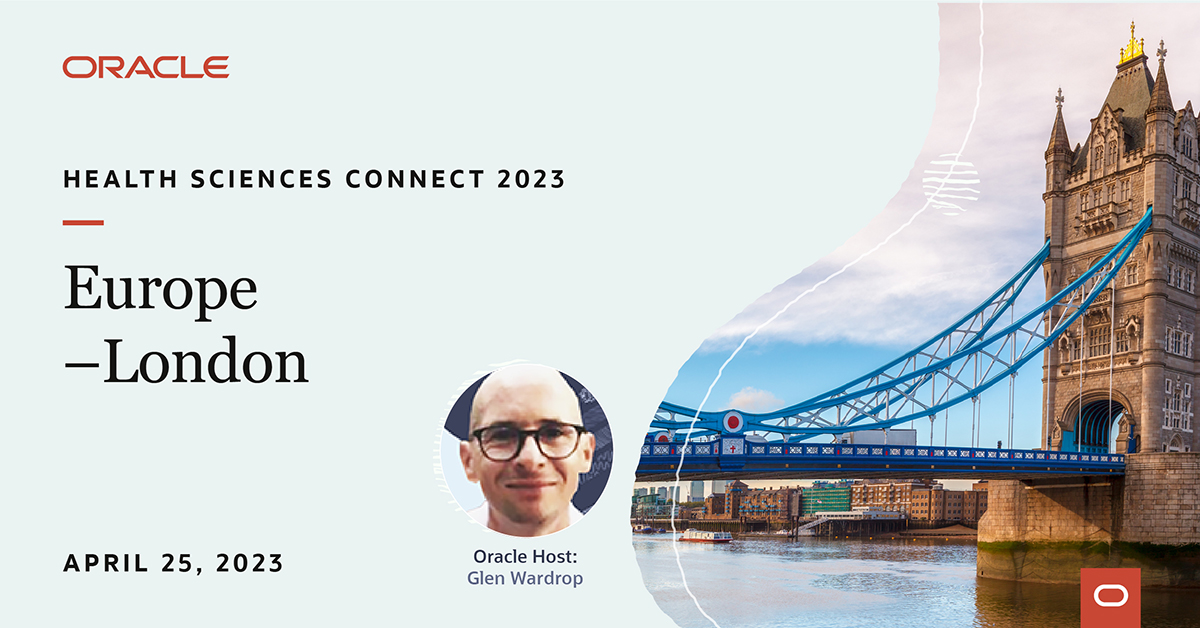
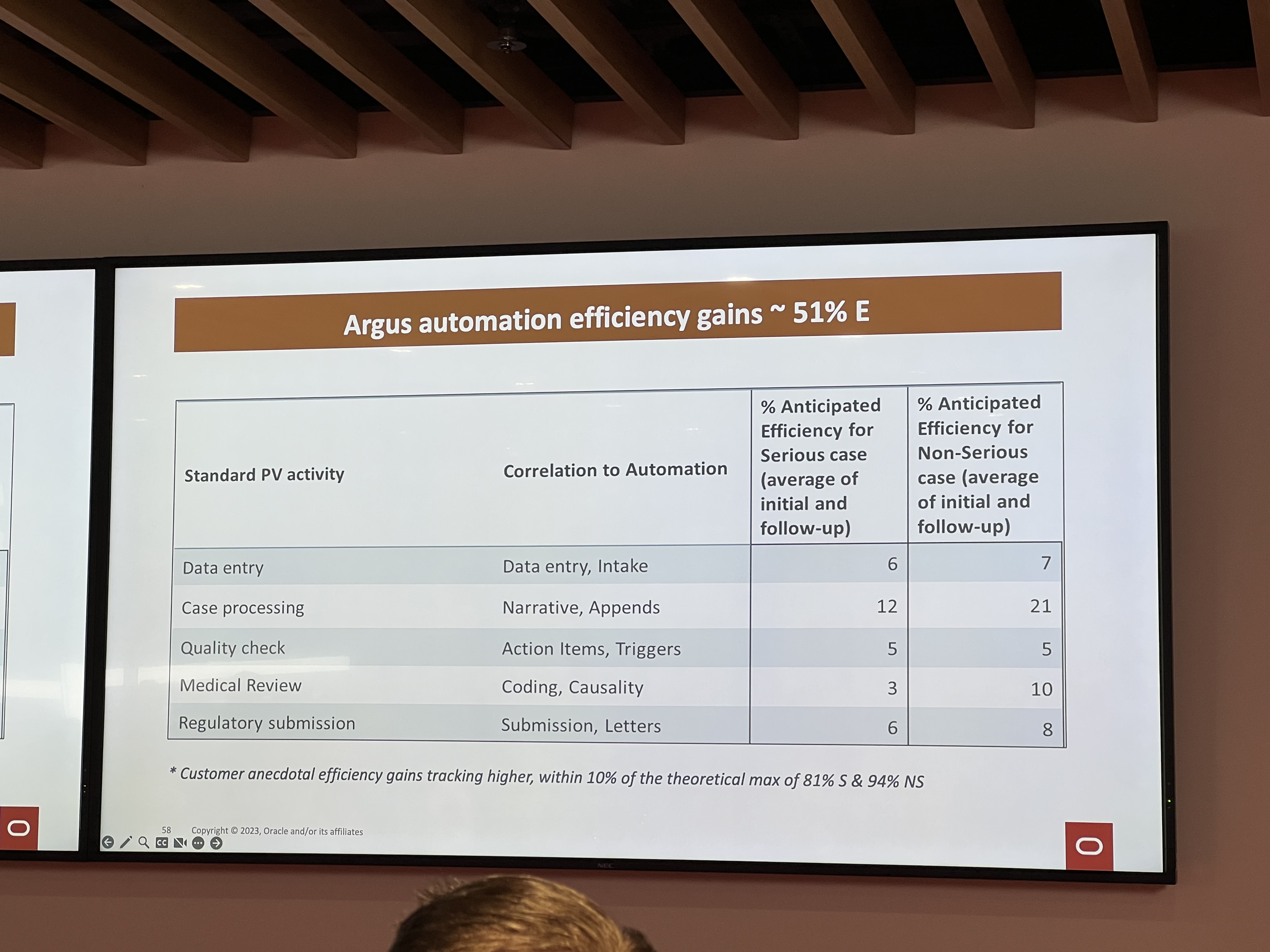
Our team enjoyed a fascinating day at Oracle Health Sciences Connect Europe in London in April.
The Oracle team convened a highly impressive roster of speakers from across the healthcare and health sciences ecosystem – from senior clinicians to heads of industry – who shared authoritative insights on topics ranging from the future of automation and AI in pharmacovigilance to global trends in drug safety and regulation.
A key focus of the agenda centred on Electronic Health Records and the insights that modernised EHRs could provide, both in terms of real-world evidence and clinical data and also for delivering improved efficiencies. One of the main drivers for the implementation of EHRs is the adoption of standards – for example, Fast Healthcare Interoperability Resources (FHIR), the global industry standard for passing healthcare data between systems – and the development of associated APIs. Several expert commentators noted that data privacy concerns remain a challenge that must be addressed if the industry is to realise the very promising advances in this area.
A recurring theme was the convergence of pharma and healthcare, and placing the patient at the centre of the process. The consensus was that, to achieve this, there needs to be strong focus on automation – and, ultimately, AI – and on integrated data that can be shared to improve drug development, pharmacovigilance, and patient pathways. With the potential gains of AI for PV still yet to be fully defined and with the cost of adoption unclear, many presenters highlighted the continued vital role of rule-based automation as an important first step on the ladder for many organisations. Data presented on the efficiency gains delivered by Oracle Argus Safety across a range of PV activities underlined this crucial point (see pictured slide, courtesy of Michael Braun-Boghos, Senior Director Safety Strategy, Oracle Health Sciences).
Fellow attendees we spoke to agreed that it was an excellent conference which offered plenty of food for thought, and a key takeaway when it comes to optimising the pharmacovigilance function for the challenges ahead: automate, automate, automate.

22nd February 2024

25th September 2023

6th July 2023

31st January 2023

2nd November 2022

17th May 2022

8th April 2022

23rd February 2022

1st December 2021

1st June 2021

5th February 2020

8th March 2018